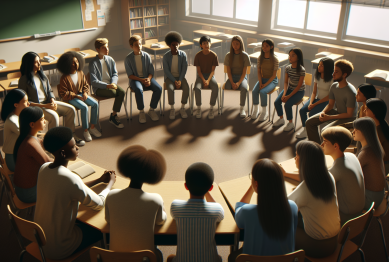In a world dominated by digital devices and constant connectivity, it’s easy to forget about simpler, analog pastimes. Yet, jigsaw puzzles—once thought of as a nostalgic activity—are making a big comeback. They are literally back on the table, and people of all ages are rediscovering the joy and benefits of piecing together beautiful images. Whether it’s for stress relief, nostalgia, or simply because they’re fun, jigsaw puzzles are enjoying a major resurgence. But why is this seemingly old-fashioned hobby so popular again?

The Rise of Jigsaw Puzzles in Recent Years
Jigsaw puzzles have been around for centuries, but they’ve recently experienced a resurgence, especially during times of uncertainty and change. The COVID-19 pandemic played a significant role in this return, as lockdowns and social distancing measures left people searching for new ways to pass the time. According to a study by Statista (2021), sales of jigsaw puzzles increased by 300% during the early months of the pandemic. But the rise of puzzles wasn’t just a short-term trend—it’s now being fueled by a broader shift toward slower, more mindful activities.
1. The Escape from Digital Overload
One of the main reasons why jigsaw puzzles have found their way back into our lives is that they provide a much-needed escape from the overwhelming digital world. For years, we’ve been glued to screens, whether for work, social media, or entertainment. Jigsaw puzzles offer a physical, screen-free alternative that allows people to focus on a single task in a non-digital format.
This shift toward analog entertainment has been described as a form of “digital detox.” Research from Psychology Today highlights that stepping away from screens and engaging in tactile activities like jigsaw puzzles can reduce feelings of burnout and improve mental clarity (Psychology Today, 2023).
2. The Therapeutic Benefits of Jigsaw Puzzles
While jigsaw puzzles might seem like a simple pastime, they actually have significant therapeutic benefits. According to the American Psychological Association (APA), activities like puzzles can help reduce stress, promote relaxation, and even enhance cognitive function. The focus required to sort pieces and connect them stimulates the brain, offering both a mental challenge and a calming effect (APA, 2023).
Puzzles have been shown to improve concentration, hand-eye coordination, and memory retention. They also provide a great way to unwind after a long, stressful day. As a result, they’ve become a popular tool for mindfulness and relaxation, especially for those who prefer quiet, solo activities that allow them to disconnect.
Why Jigsaw Puzzles Are Perfect for Today’s Lifestyle
With busy work schedules, constant emails, and the pressures of modern life, people are increasingly looking for low-tech ways to relax. Jigsaw puzzles fit perfectly into this search for simplicity. Here’s why:
1. A Social Activity for All Ages
Jigsaw puzzles are not just solo endeavors. They are also a wonderful group activity, ideal for family bonding or time with friends. With the rise of puzzle cafes and online communities dedicated to puzzling, puzzles have become a shared activity, perfect for social gatherings. According to a report by NPR (2022), the resurgence of jigsaw puzzles can be attributed to their ability to bring people together in a time when social distancing and isolation were common (NPR, 2022).
Puzzles offer the unique ability to connect multiple generations, from grandparents to young children. This multi-generational appeal makes them an ideal choice for family activities or quiet weekends spent together.
2. Available for Every Interest and Skill Level
Another reason why jigsaw puzzles are making a comeback is the sheer variety available. Modern puzzles come in all shapes, sizes, and themes. From intricate 1,000-piece challenges to 3D puzzles and custom-made designs, there’s something for everyone. Whether you’re a fan of nature scenes, cityscapes, famous art, or pop culture, there’s a puzzle out there to suit your interests.
With puzzles ranging from easy to expert-level difficulty, anyone can enjoy them—whether you’re looking for a quick and relaxing activity or a serious challenge that requires hours of concentration.
3. Accessible and Affordable
Unlike many hobbies that require expensive gear or memberships, jigsaw puzzles are highly affordable and accessible. You can find them in most stores, online marketplaces, or second-hand shops. Plus, they don’t require any special equipment—just a table and a comfortable chair.
Moreover, because they don’t require a long-term financial commitment, puzzles make a perfect casual hobby for those on a budget or anyone looking for a low-cost entertainment option.
The Psychology of Completing a Puzzle
Completing a jigsaw puzzle provides a tangible sense of accomplishment. The satisfaction of finishing the last piece or seeing the picture come together is immensely rewarding. According to Harvard Business Review, engaging in activities that offer a clear sense of progress, like completing a puzzle, can have a positive impact on mental health, boosting self-esteem and satisfaction (Harvard Business Review, 2023).
Jigsaw puzzles also engage the brain in a way that few other activities do. The combination of pattern recognition, spatial reasoning, and memory recall strengthens cognitive abilities, making puzzles an excellent exercise for the brain.
How to Get Started with Jigsaw Puzzles
If you’re ready to jump into the world of jigsaw puzzles, here are some tips to help you get started:
1. Start with the Right Difficulty Level
For beginners, start with puzzles that have fewer pieces (around 300–500 pieces). As you become more comfortable, you can move up to larger puzzles with more pieces.
2. Choose a Theme That Interests You
Since jigsaw puzzles come in many themes, pick one that you find visually appealing or personally engaging. Whether it’s a scenic mountain view, an abstract design, or a favorite movie poster, the more interested you are in the image, the more enjoyable the process will be.
3. Set Up a Dedicated Puzzle Space
Designate a quiet area in your home to work on puzzles. Make sure the space is free from distractions, and ensure there’s enough room for all the pieces. A dedicated space will help you focus and make puzzle-solving more enjoyable.
4. Make It a Regular Activity
If you enjoy puzzles, consider making them a regular part of your routine. Whether it’s a weekend tradition or a nightly wind-down activity, regularly engaging in puzzles can provide ongoing mental stimulation and stress relief.
Conclusion: Jigsaw Puzzles Are Here to Stay
Jigsaw puzzles may have once been seen as a pastime of the past, but they are making a significant comeback in today’s world. Whether for relaxation, family bonding, or mental stimulation, they offer a fun and rewarding break from the digital world. With their wide variety of themes, levels of difficulty, and accessible price points, puzzles are proving that old-school activities can still have a place in modern life.
As people continue to search for ways to unplug and reconnect with themselves and others, jigsaw puzzles provide the perfect opportunity to slow down, focus, and unwind—one piece at a time.
References:
- Harvard Health Publishing (2023) The Benefits of Jigsaw Puzzles for Mental Health. Available at: https://www.health.harvard.edu (Accessed: 28 April 2025).
- NPR (2022) Why Jigsaw Puzzles Are Making a Comeback. Available at: https://www.npr.org/jigsaw-puzzles-resurgence (Accessed: 28 April 2025).
- Psychology Today (2023) The Therapeutic Effects of Puzzle Solving. Available at: https://www.psychologytoday.com/articles/puzzle-therapy (Accessed: 28 April 2025).









